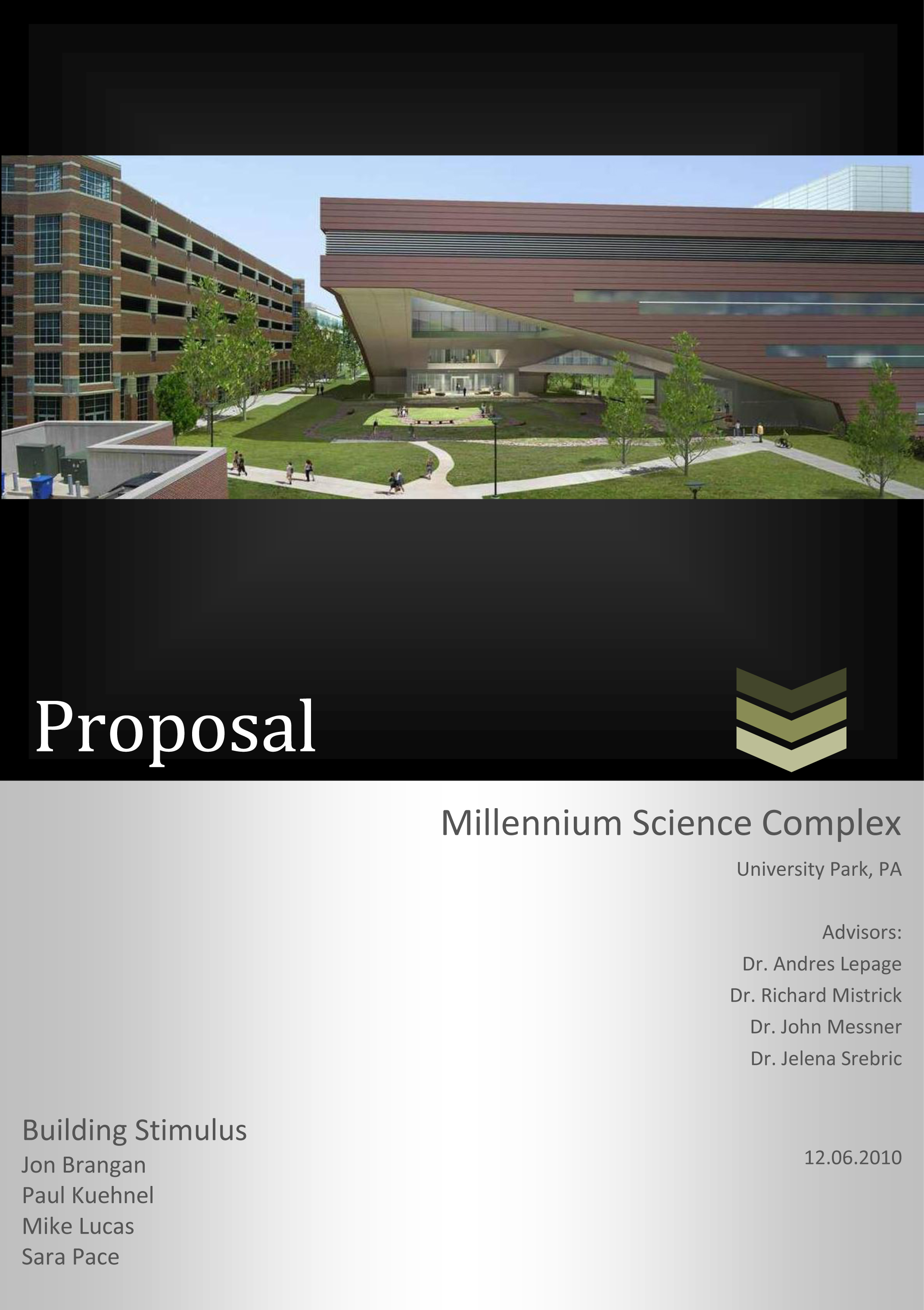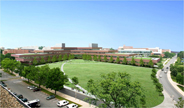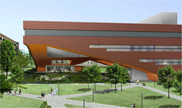
Revised IPD/BIM Proposal
The revised proposal reflects changes made to the MAE Course Related Study for the Mechanical Option. A CFD analysis will no longer be completed for the double skin facade.
Mechanical Depth 1:
To improve the thermal performance of the existing façade, a double skin façade will be designed to replace the existing structure. The large air cavity associated with the double skin provides a thermal buffer between the outside environment and the perimeter zones of the building, which will decrease the heating and cooling loads for these zones. Both a continuous double skin façade and non-continuous (story-high) double skin façades will be investigated to determine the best alternative.
Mechanical Depth 2:
Chilled beams will also make it possible to reduce the amount of energy needed in the building. Focus of the investigation and implementation of this system will be on load heavy spaces, such as office spaces and equipment corridors, which do not require as much air exchange. To evaluate the overall energy savings, Trane TRACE will be used. Reduced AHU sizes will be key factors in the redesign, as well as the integration of luminaires into the chilled beams. A lifecycle cost analysis of the system will also be performed to determine the feasibility.
Mechanical Depth 3:
To decrease the dependence on fossil fuel consumption sources and reduce the carbon emissions produced by the Millennium Science Complex, rooftop mounted wind microturbines will be investigated as an alternative energy source for some of the building’s electricity loads. The process heat load requirements in the laboratories are potential candidates for this on-site generation since energy needs of laboratories are immediate and intense. Since wind turbines usually produce intermittent energy that is not always reliable due to the weather, electricity from this renewable resource will be investigated for use in less critical equipment loads. The possibility of short-term storage will also be further pursued for design considerations. They will be assessed in terms of practicality, feasibility by means of lifecycle cost, and coordination with other disciplines in order to achieve the overall goals and scope of the design team.
MAE Course Related Study:
To fulfill the MAE requirements for BIM Thesis, knowledge learned in AE 559, “Computational Fluid Dynamics in Building Design,” will be used to complete CFD models and analysis of wind turbine additions to the structure. Also, AE 552, Air Quality in Buildings, will be used to ensure the zones that are replaced with chilled beams maintain the desired level of air quality in the space due to less air flow.
Original IPD/BIM Proposal
Proposal and Executive Summary
Mechanical Depth 1:
To improve the thermal performance of the existing façade, a double skin façade will be designed to replace the existing structure. The large air cavity associated with the double skin provides a thermal buffer between the outside environment and the perimeter zones of the building, which will decrease the heating and cooling loads for these zones. Both a continuous double skin façade and non-continuous (story-high) double skin façades will be investigated to determine the best alternative.
Mechanical Depth 2:
Chilled beams will also make it possible to reduce the amount of energy needed in the building. Focus of the investigation and implementation of this system will be on load heavy spaces, such as office spaces and equipment corridors, which do not require as much air exchange. To evaluate the overall energy savings, Trane TRACE will be used. Reduced AHU sizes will be key factors in the redesign to coordinate with structural system design, as well as the integration of luminaires into the chilled beams. A lifecycle cost analysis of the system will also be performed to determine the feasibility.
Mechanical Depth 3:
To decrease the dependence on fossil fuel consumption sources and reduce the carbon emissions produced by the Millennium Science Complex, rooftop mounted wind microturbines will be investigated as an alternative energy source for some of the building’s electricity loads. The process heat load requirements in the laboratories are potential candidates for this on-site generation since energy needs of laboratories are immediate and intense. Since wind turbines usually produce intermittent energy that is not always reliable due to the weather, electricity from this renewable resource will be investigated for use in less critical equipment loads. The possibility of short-term storage will also be further pursued for design considerations. They will be assessed in terms of practicality, feasibility by means of lifecycle cost, and coordination with other disciplines in order to achieve the overall goals and scope of the design team.
MAE Course Related Study:
To fulfill the MAE requirements for BIM Thesis, knowledge learned in AE 559, “Computational Fluid Dynamics in Building Design,” will be used to complete CFD models and analysis of both the double skin façade and wind turbine additions to the structure. Also, AE 552, Air Quality in Buildings, will be used to ensure the zones that are replaced with chilled beams maintain the desired level of air quality in the space due to less air flow.
Links
Note:
While great efforts have been taken to provide accurate and complete information on the pages of CPEP, please be aware that the information contained herewith is considered a work-in-progress for this thesis project. Modifications and changes related to the original building designs and construction methodologies for this senior thesis project are solely the interpretation of Sara Pace. Changes and discrepancies in no way imply that the original design contained errors or was flawed. Differing assumptions, code references, requirements, and methodologies have been incorporated into this thesis project; therefore, investigation results may vary from the original design.



